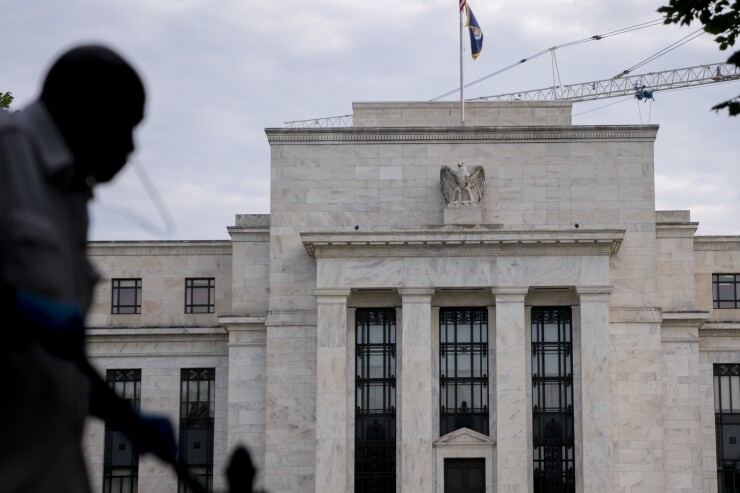Credit conditions for most categories of large syndicated bank loans improved last year, but federal bank regulators say the market could be more stressed than current data indicate.
The share of large syndicated loans given non-passing credit ratings fell from 10.6% through the first half of 2021 to 7% at the midpoint of last year, according to a report released Friday by the Shared National Credit, or SNC, Program.
The SNC Program is a joint effort from the Federal Reserve Board of Governors, Federal Deposit Insurance Corp. and Office of the Comptroller of the Currency that tracks borrowers with aggregate loan commitments of $100 million or more originated by at least three banks.
The report finds that loans issued to borrowers in industries most hindered by the COVID-19 pandemic remain more stressed than the broader market, with a higher collective share of loans deemed special mention or classified — designations that indicate underlying weakness in the prospects for repayment. These borrowers include those focused on entertainment and recreation, oil and gas, commercial real estate, retail and transportation services. But syndicated loans to those industries represented a smaller share of the overall market, down to 18.9% last year from 25.7% the year before.
Transportation services was the only category noted in the report that saw credit quality decline last year. Its share of special mention and classified ratings shot up from 50.5% to 61.6%.
Large syndicated loan commitments grew from just under $5.2 trillion in 2021 to roughly $5.9 trillion last year, a 13.9% increase year-over-year. U.S. banks continued to hold the largest share of commitments tracked by the SNC at 44.7%, followed by foreign banks at 32.3% and nonbank financial institutions at 22.9%.
Despite holding the smallest share of the market, nonbanks had the largest share of large syndicated loans with non-passing credit ratings, according to the report, at 19.2% compared to 3.2% and 3.6% for U.S. banks and foreign banks, respectively. Of the $1.1 trillion of leveraged loans held by nonbanks in this space, more than $1 trillion were non-investment grade term loans.
The concentration of leverage and risk in the nonbank sector aside, the report found that overall risk in the SNC space is "moderate" and significantly improved from earlier in the pandemic.
Still, despite the positive trajectory, the SNC report notes that the findings do not account for subsequent changes to interest rates in the final six months of 2022 and the overall softening of financial conditions. As these factors are absorbed by the market, stress levels could rise, especially for highly leveraged borrowers without financial flexibility.
"The magnitude and direction of risk in 2023 will be impacted by borrowers' ability to manage through a period of softer economic conditions including supply chain imbalances, labor challenges, geopolitical tension, inflation, and vulnerability to rising interest rates," the report noted. "These macroeconomic conditions could negatively impact the financial performance and repayment capacity of borrowers in a wide variety of industries, especially highly leveraged borrowers that often lack the financial flexibility to respond to external challenges."







